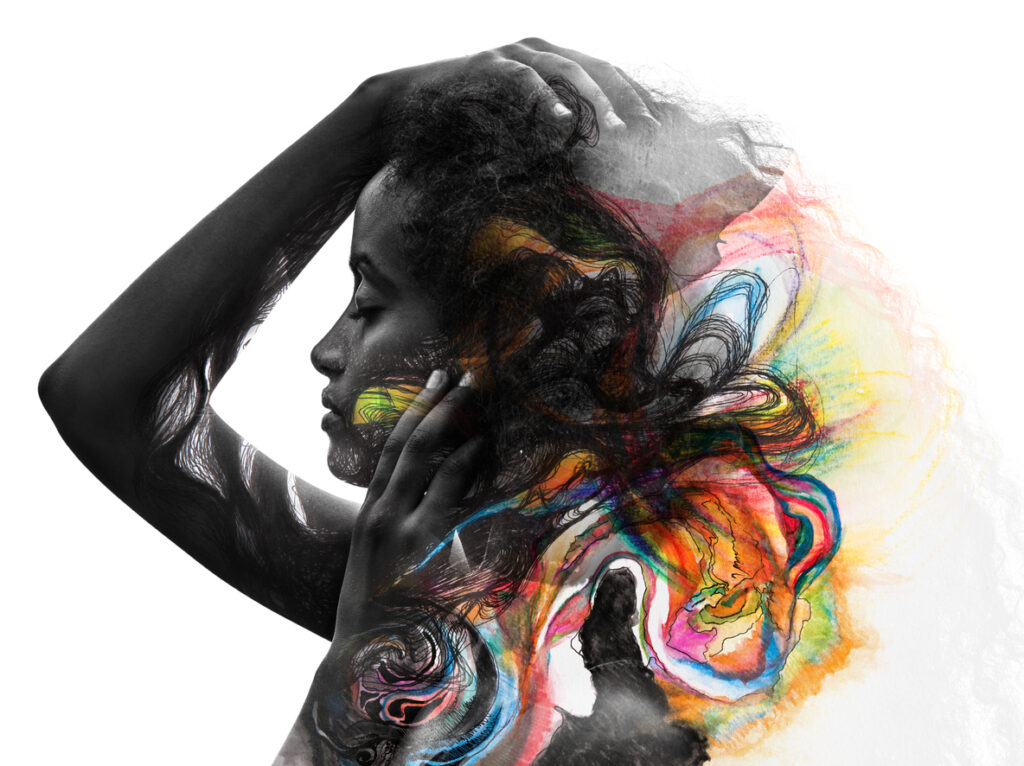I have always felt different in a way that I was unable to describe. A series of contradictions, if you will – shy but gregarious, energetic and easily tired, deeply sensitive yet drawn to conflict, a chaotic perfectionist. I used to have a sign on my desk as a child which said ‘Why be normal?’, a mantra by which I have lived most of my life and which I didn’t realise at the time held portentous significance.
A later-in-life diagnosis
When I received my ADHD diagnosis at age 40, I went through a period of reflection, making sense of a life lived without awareness of a hidden disability. Some of the reflection was enlightening, some sad and some tinged with a little regret.
My diagnosis was prompted by a prolonged episode of depression following the sudden and premature death of my mum. She was my best friend, my north star and my emotional barometer. The diagnosis made me realise that she had been my ‘scaffolding’ throughout life and without her I had fallen apart. Then I started to consider other enduring relationships in my life.
Neurodivergent thinking differences present a challenge to many widely accepted organisational processes and practices
I have had the same close group of girlfriends since I was a child – through school they were the ones who helped me stay organised and in adulthood the ones who to this day scoop me up when I need them. When reflecting on my career, I realise that my most successful and happiest times were being part of or leading teams who accepted my shortcomings and complemented my strengths.
Today, neurodiversity in the workplace is increasingly on organisations’ agendas, though it is a relative newcomer to the D&I party. Whilst it is great that these differences are being recognised, I feel we are missing a huge opportunity to seize this moment and transform organisations in a way that benefits all.
There are an increasing number of organisations offering training on neurodiversity in the workplace, helping people to understand neurodivergent conditions and how they can support such colleagues. This is hugely valuable and I would recommend all organisations do this given that up to 20% of their workforce may fall under this umbrella.
However, neurodivergent thinking differences present a challenge to many widely accepted organisational processes and practices. And it is these processes and practices which, based on my experience of working with and within organisations for many years, I believe stifle the ability of teams to truly realise the benefits of diversity of thought.
The ‘vanilla’ homegenity of modern leadership
I am often asked by HR directors, conscious of the homogeneity of their leadership teams, how they can create D&I plans which will ensure they are more diverse in the future. The first thing I always ask to see is the organisation’s behaviour or leadership framework. These frameworks are more often than not embedded throughout the employee lifecycle, informing decisions within recruitment, development programmes, promotion and dismissal.
The problem here is the HR director’s age old problem – the perpetuation of mediocre, homogenous leadership teams
More often than not these frameworks reflect a typical ‘corporate’ culture and are barriers to acceptance of difference, not least for neurodivergent employees. We are all familiar with the language; attention to detail, teamwork, emotional intelligence, resilience, assertiveness, to name but a few of the usual suspects. Prescribing these behaviours implicitly proscribes their opposites – which are the sort of behaviours that may be observed in neurodivergent colleagues.
In the past I have been told that I am too slapdash when it comes to detail, that I can be obstructive and argumentative, that I am over-sensitive, that I can’t take feedback (I can, but not unquestioningly) and that I have a propensity to take over any activity I am involved with. Yes, these things are indeed true, which makes me somewhat of a corporate nightmare if behaviour frameworks are anything to go by.
In a way, the content of the frameworks is irrelevant. Many organisations publicly state that employees can ‘bring their whole selves to work’, when in reality the statement should be caveated with ‘provided you conform to a strict set of vanilla behaviours’. The problem here is the HR director’s age old problem – the perpetuation of mediocre, homogenous leadership teams.
Embrace neurodiversity to boost wellbeing
If organisations want to truly embrace neurodiversity in the workplace they need to start thinking about what they are doing that may obstructing all diversity of thought. Neurodiversity is all of us, following a bell curve with neurodivergent conditions represented at each margin. We are all different and the beauty of difference is not being exploited in the workplace.
I have thrived and been successful in my life when I have felt supported, where my differences are accepted and my unique talents recognised
For neurodivergent colleagues, the situation doesn’t just mean their talents aren’t maximised. It also means that wellbeing and mental health are negatively impacted by both damaged self-esteem, due to inappropriate feedback and lack of progression, and the stress of ‘masking’ challenges to fit in with the corporate culture which can lead to burnout.
I have thrived and been successful in my life when I have felt supported, where my differences are accepted and my unique talents recognised. When I have been able to be the best version of myself. Imagine what teams could achieve if all leaders became facilitators of wellbeing and talent, recognising and valuing differences so that everyone could feel this way?
Get it right for neurodivergent colleagues, and you will get it right for everyone.
Helen May is the founder of diversity & inclusion consultancy, Belonging@Work and author of new book Everyone Included: Improve Belonging, Diversity & Inclusion in Your Team.
Interested in this topic? Read How HR can bolster the learning and development of neurodiverse people.
[cm_form form_id=’cm_65a14c3f5da64′]






